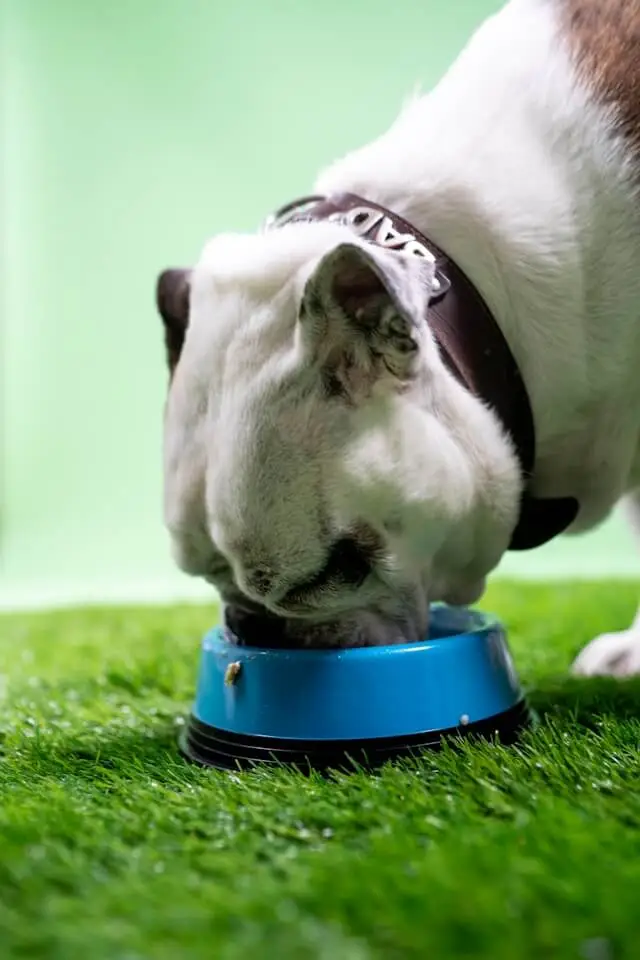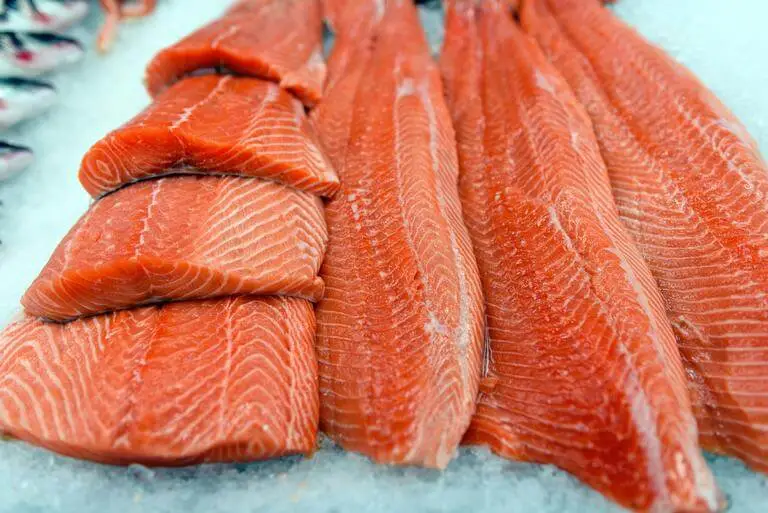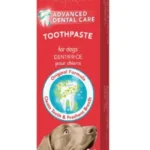Wet salmon dog food is not just a trend; it’s a nutritious option for your dog. More dog owners are leaning toward wet salmon dog food options after discovering its benefits. Salmon is great for your pup’s taste buds and is also packed with omega-3 fatty acids, which are crucial for your dog’s health.
Let’s see why wet salmon dog food is becoming a popular choice. We will also answer pressing questions like what makes wet salmon dog food a superior choice for your dog. How can it impact their overall health and vitality? And most importantly, what should you look for when choosing the best wet salmon dog food for your canine companion?
Is Salmon Safe for Dogs?
A common question I get is, is salmon good for dogs? In moderation, fresh salmon can be a healthy treat for dogs. This fish is rich in omega-3 fatty acids, which support a dog’s immune system, coat health, and cognitive function.
However, dog owners need to understand the potential risks of raw salmon. Raw salmon may carry parasites and bacteria like Neorickettsia helminthoeca, which can cause salmon poisoning disease. Unfortunately, this is a condition that can be fatal if left untreated.
Check for the “salmon for dogs” label, which is evident on the packaging, to avoid giving your pet improperly processed fish. Moderation is also important when incorporating salmon into your dog’s diet to maintain a balanced nutrition profile.
Discovering the Nutritional Benefits of Wet Salmon Dog Food
Wet salmon dog food is a nutritional treasure trove for our canine companions, providing many health advantages.
Excellent Source of Omega-3
Rich in Omega-3 fatty acids, a key element of salmon, it nurtures a lustrous coat and ensures optimal skin health. Omega-3s are renowned for their anti-inflammatory properties, which can significantly improve joint mobility and reduce discomfort from arthritis. Moreover, for dogs that require mental stimulation or are advancing in age, the cognitive benefits of these fatty acids are indisputable, enhancing brain function and overall alertness.
Here is an in-depth research study by the International Journal of Current Microbiology and Applied Sciences on the role of Omega-3 in canine health.
Highly Digestible
Furthermore, salmon is a highly digestible protein, making it an excellent option for dogs with sensitive stomachs or those prone to digestive issues. This highly digestible protein ensures that your pet absorbs as many nutrients as possible while minimizing the chance of any gastrointestinal upset.
Rich in Essential Vitamins and Minerals
Salmon is a great source of essential vitamins and minerals. It contains vitamin D, critical for bone health, and B vitamins, which serve as catalysts for energy metabolism, keeping your furry friend eager and active throughout their daily adventures.
Why Should I Give My Dog Wet Salmon Dog Food?
Choosing wet salmon dog food offers your dog a culinary delight rooted in substantial health benefits. The benefits of salmon dog food for dogs are fundamental to their overall well-being. While other proteins are healthy options, salmon’s unique nutritional profile sets it apart as a food that can support a wide range of bodily functions and maintain your pet’s vitality.
It is clear that integrating wet salmon dog food into your dog’s diet is more than just a treat; it’s a substantial step towards their long-term health and happiness.
The Great Protein Debate: Is Salmon Dog Food Better Than Chicken?
When choosing the best food for our four-legged friends, the “salmon vs chicken” debate is often at the forefront of a pet owner’s mind. Both salmon and chicken are nutritious options that cater to a dog’s protein needs.
Chicken is a classic choice – it’s typically more budget-friendly, and you can find it in almost any pet store. Plus, it’s a solid source of protein that supports muscle development and energy levels. On the other hand, salmon is popular for its high content of Omega-3 fatty acids, which are not as abundant in chicken.
These fatty acids give salmon the upper hand in supporting a shiny coat, strong joints, and good brain health. But is wet salmon dog food better than chicken? The answer isn’t one-size-fits-all. Consider your pup’s dietary needs, taste preferences, and allergies. Reflect on these factors, alongside your budget and the availability of high-quality options, to make the best choice for your dog.
Key Considerations When Selecting Wet Salmon Dog Food
It is essential to assess the quality and origin of ingredients and verify the inclusion of balanced nutrients catered to your dog’s needs. Here are the key considerations;
· Quality of Ingredients
Look beyond the fancy packaging. Look for food that lists salmon as the first ingredient, indicating it’s the primary protein source. Avoid foods with ambiguous terms like “meat by-products.” Products that vaguely label ingredients as “meat by-products” often contain fillers with minimal nutritional value—potentially even posing health risks to your furry friend.
· Nutritional Balance
Each dog food product should adhere to the nutritional standards set by the AAFCO Dog Food Nutrient Profiles. These profiles vary by a dog’s life stage—from puppies through adults to senior dogs. Ensure that the food contains a balanced mix of proteins, fats, carbohydrates, vitamins, and minerals suitable for your dog’s particular stage of life.
· Artificial Additives
Artificial additives can harm dogs over time, causing allergies or other health issues. Select dog foods free from artificial colors, flavors, or preservatives like BHA, BHT, or ethoxyquin. Chemical additives prolong shelf life but may negatively impact health.
· Omega Fatty Acids
The benefits of omega-3 and omega-6 fatty acids include better skin and coat condition, reducing inflammation, and supporting cognitive function. Confirm that these essential fatty acids are listed to get your dog these key health benefits.
· Grain or Grain-Free
Grain-inclusive diets can offer a balanced source of fiber and nutrients. However, grain-free options are best for dogs with specific grain allergies or intolerances. It’s essential to make a choice based on your dog’s unique health needs and digestive comfort.
· Brand Reputation and Recalls
Investigate the dog food brand’s history for safety recalls and consumer satisfaction. Brands with frequent recalls might indicate quality control issues, while positive consumer feedback typically reflects a trustworthy product.
· Manufacturer Information
Transparency from brands about the source of their ingredients and where they manufacture their food offers consumers confidence. Check the product’s safety and ethical production standards.
· Specific Health Benefits
Formulations tailored for dogs with specific health concerns. Some foods offer benefits, e.g. joint health, weight management, or digestion aid—which can significantly improve your pet’s quality of life. It’s worth seeking these targeted benefits if your dog has particular health needs.
· Caloric Content
Manage your dog’s weight by paying attention to the caloric content per serving. This can prevent overfeeding and weight gain, particularly in less active or older dogs requiring fewer calories.
· Taste and Palatability
While your dog’s health is the priority, their enjoyment of food should not be overlooked. A taste test can discern whether your dog readily accepts and enjoys the meal, making mealtimes a pleasant experience rather than forced.
· Packaging and Convenience
Consider practical factors such as the ease of opening, serving, and storing. It is also important to check the ability to reseal the packaging, which can influence the freshness of the food and feeding convenience. If not, consider getting the right bag size of dog food for durability.
· Price and Value
Calculate the cost per serving and consider the overall value in terms of the health benefits and quality of ingredients. Cheapest isn’t always best, particularly if it compromises the nutritional integrity of your dog’s diet.
Can I Feed My Dog Salmon and Rice?

Absolutely—this duo is common among many pet owners for good reason. Wet salmon dog food combined with rice makes for a nourishing meal beloved for its easy digestibility and balanced nutrition.
Salmon provides the high-quality protein and omega-3 fatty acids crucial for your dog’s health, offering benefits such as shiny coats, stronger joints, and enhanced brain function. Rice complements this by being a highly digestible grain, providing energy through carbohydrates and serving as a gentle food for dogs with sensitive stomachs.
The digestibility of rice means that it can be soothing for gastrointestinal upsets, while its low fiber content helps in cases where your furry friend requires a milder diet. Meanwhile, the nutritious profile of salmon as a protein-packed fish rich in vitamins and minerals makes it an excellent choice for the main course.
Note: Not all wet salmon dog food includes rice in its formulation, so it’s crucial to check the labels if you want this combination.
Can I feed my dog rice and fish every day?
It’s wise to consult a vet. Because each dog has unique nutritional needs and activity levels, portion sizes and frequency should be tailored to your dog’s specific breed and health requirements. This ensures they’re getting a perfectly balanced diet suited just for them.
Feeding Your Furry Friend Wet Salmon Dog Food-Guidelines
How much salmon should I feed my dog a day? The answer is to always start with the serving suggestions on the wet salmon dog food label. These guidelines help ensure you’re not overdoing it because giving your dog too much of a good thing can still lead to weight gain and health problems. Remember, it’s just as important not to overfeed as to nourish.
Some pet parents wonder, can I feed my dog fish every day? While fish can be a healthy part of your dog’s diet, moderation is critical. Overfeeding any food, even high-quality wet salmon dog food, might result in an unbalanced diet and contribute to health issues. It’s best to chat with your vet to create a personalized feeding plan tailored for your dog.
The best plan will depend on the dog’s breed, age, and activity level and consider any special health concerns they might have. This way, you’ll be sure your pup gets the nutrients they need to thrive without going overboard.
Try High-Quality Wet Salmon Dog Food Today
Wet salmon dog food is a powerhouse of nutrition, rich in Omega-3 fatty acids, vitamins, and minerals vital for maintaining your canine’s health. It supports everything from a lustrous coat to strong joints and cognitive function. However, it’s crucial to pair the right portion size with your dog’s needs and consult a vet to customize a diet plan, ensuring a balanced intake of this nutritional marvel.
Whether you’re weighing it against other protein sources like chicken or considering pairing it with rice for digestive comfort, remember that moderation and variety are key. Embrace the journey to your dog’s well-being by exploring high-quality wet salmon dog food options today – they’re more than just a meal; they’re a step towards a happier, healthier furry friend.





